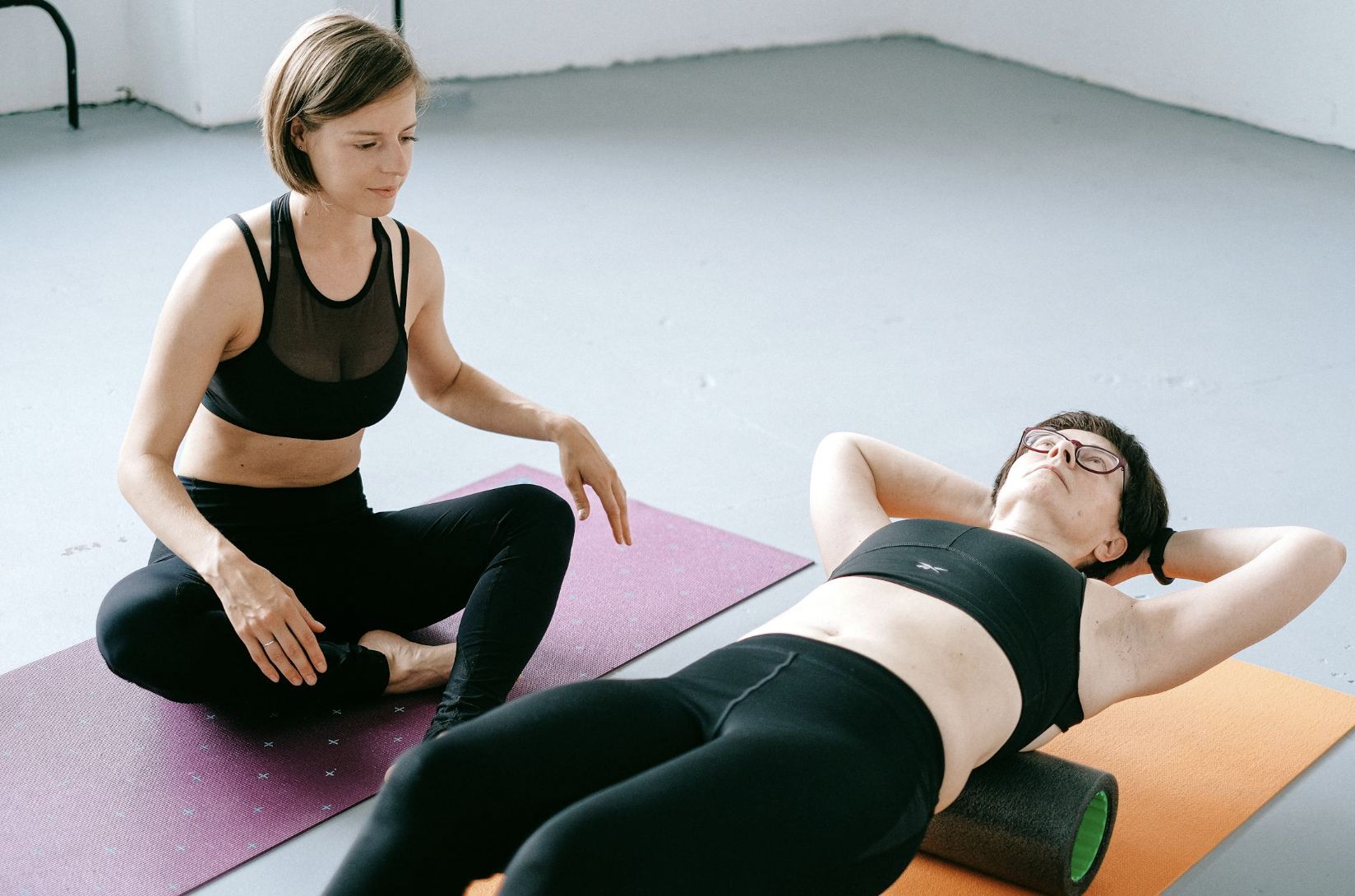We all know the basic benefits that getting a massage give us — reduced muscle tension, better sleep, improved flexibility and circulation, and more. But what about self-myofascial release?
In simple terms, self-myofascial release is self-massage, often done using tools like foam rollers, percussion tools (like a massage gun), and tennis balls. "Myo" refers to muscles, and fascia is a layer of connective tissue that connects your skin to your muscles. We can hold a lot of tension in these areas, so by rolling them out and self-massaging, you can release and relax them.
The tension and pain usually originates from specific points within myofascial tissue called "trigger points." Myofascial release focuses on reducing pain by easing the tension and tightness in these trigger points.
Benefits of self-myofascial release
Self-myofascial release decreases pain and tension (even headaches), helps tissue recover, releases trigger points, improves joint movement, increase mobility, improves circulation, and increases athletic performance.
It stimulates the many touch, pressure, and stretch receptors in your skin and muscles, and these nerve signals can inhibit pain and tell the brain to relax its "guarding" mechanisms — like muscle tension and hypersensitivity. This is why we can feel instant relief when the right spot is massaged.
Whatever the underlying reason, many people find that foam rolling and other forms of self-massage can relieve their pain and soothe soreness, which makes it an easy, affordable, and accessible self-care practice. Here are a few tips on how you can get started with it at home.
How to perform self-myofascial release
Start light and broad. Your body needs some time to warm up and get ready to feel the deeper pressure. To prepare for firmer pressure, you can start with light contact, like rubbing your skin with your hands, stretching your skin in different directions and holding the stretch, or gently squeezing and massaging your muscles.
To help your body warm up even more, do self-massage or foam rolling on broader areas and thicker muscles, like your upper back, thighs, and glutes. Avoid bony spots, like your shins or directly on your spine. It also helps to begin with a tool that has more surface area, like a large foam roller. Once you get a feel for it, you can switch to smaller tools, like tennis balls, to target specific spots.
To get started, place the device on the muscle and move it around until you find a trigger point (a sore spot in your muscle). Be sure to avoid your joints and bones. Once you locate the trigger point, hold the device on it for 30–60 seconds, or until you feel it release.
Be sure to supply enough pressure to encourage the muscle to relax and release. Applying too much pressure will encourage the muscle to contract and protect itself, preventing it from releasing. Some people love to really smash their muscle knots, but be careful to not go so hard that you bruise, or make yourself even more sore later.
Self-myofascial release can be performed daily or a couple times a day, depending on how long the issue has been going on for. As your body learns to adapt to the new normal, you should be able to reduce the frequency of the self-myofascial release.
Want even more benefits? Try stretching afterwards. Stretch the affected muscle for 30–60 seconds to encourage it to lengthen, and then exercise as normal.
We hope these tips on self-myofascial release will help you incorporate it into your workout routine and give you some relief. At OnSite Wellness LLC, health and wellness is our specialty.
Incorporating a wellness program at your workplace can have massive benefits for your employees in managing their health. Contact us to learn more!
-1.png?width=300&name=1127895_OSW%20Tagline%20Logo_081021%20(1)-1.png)


